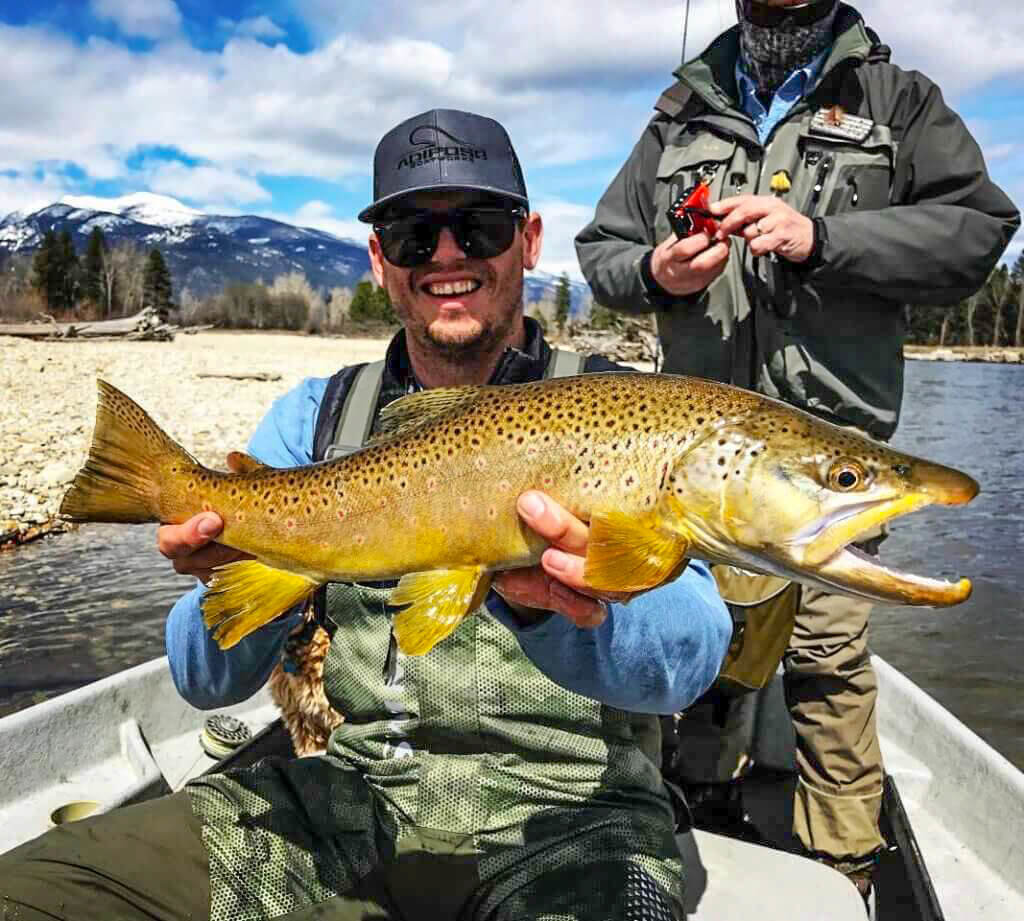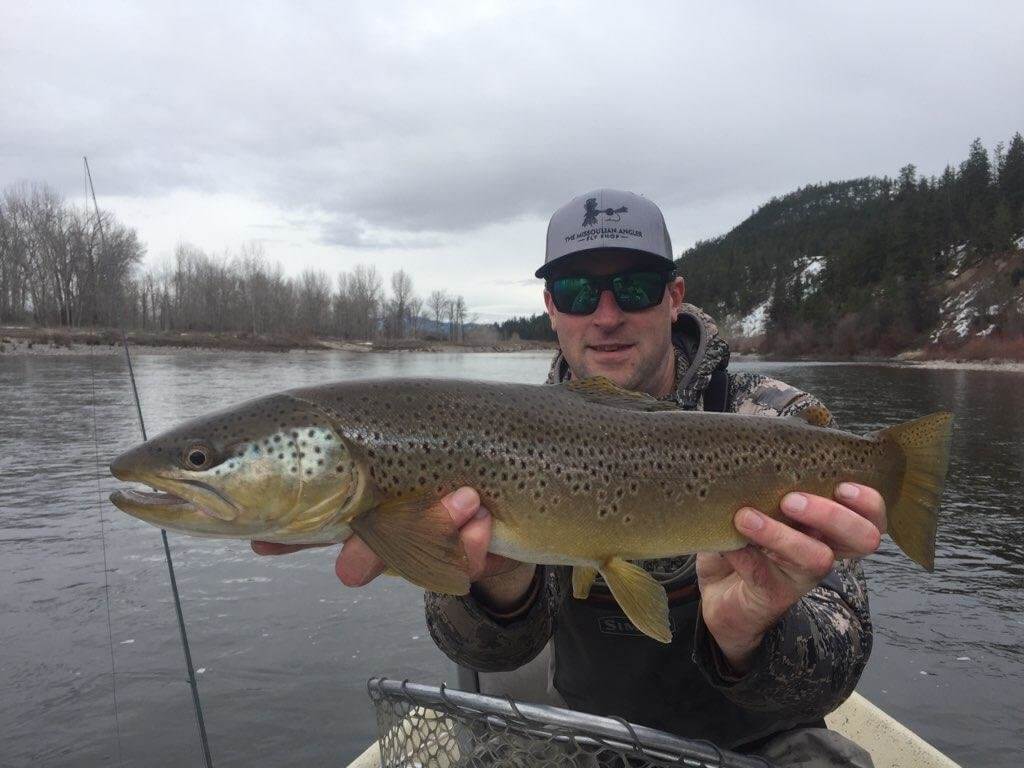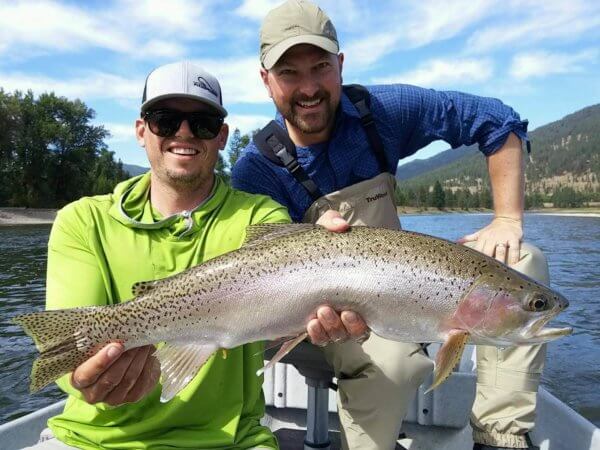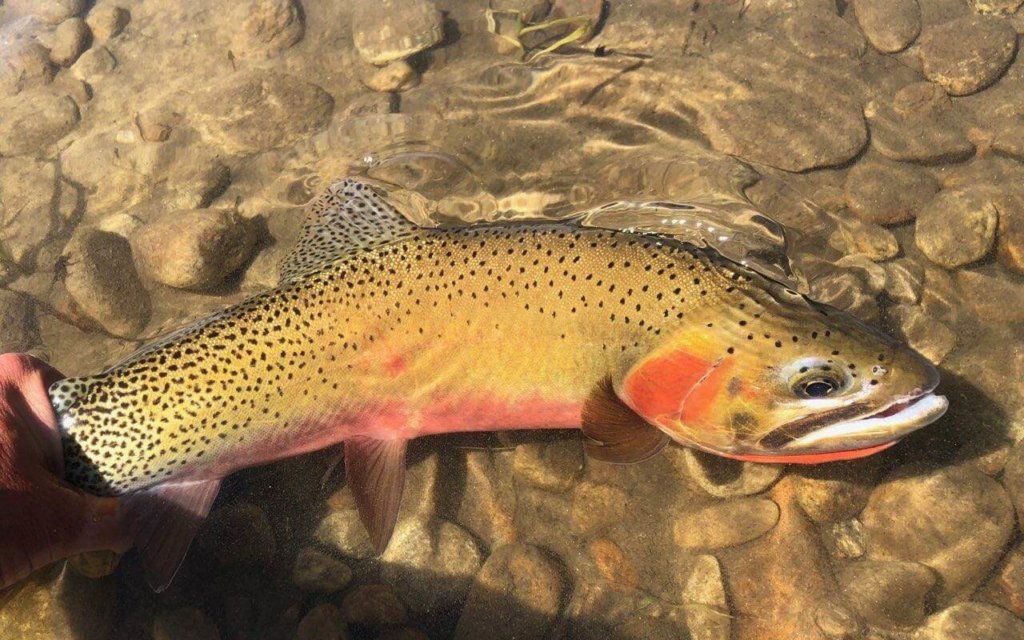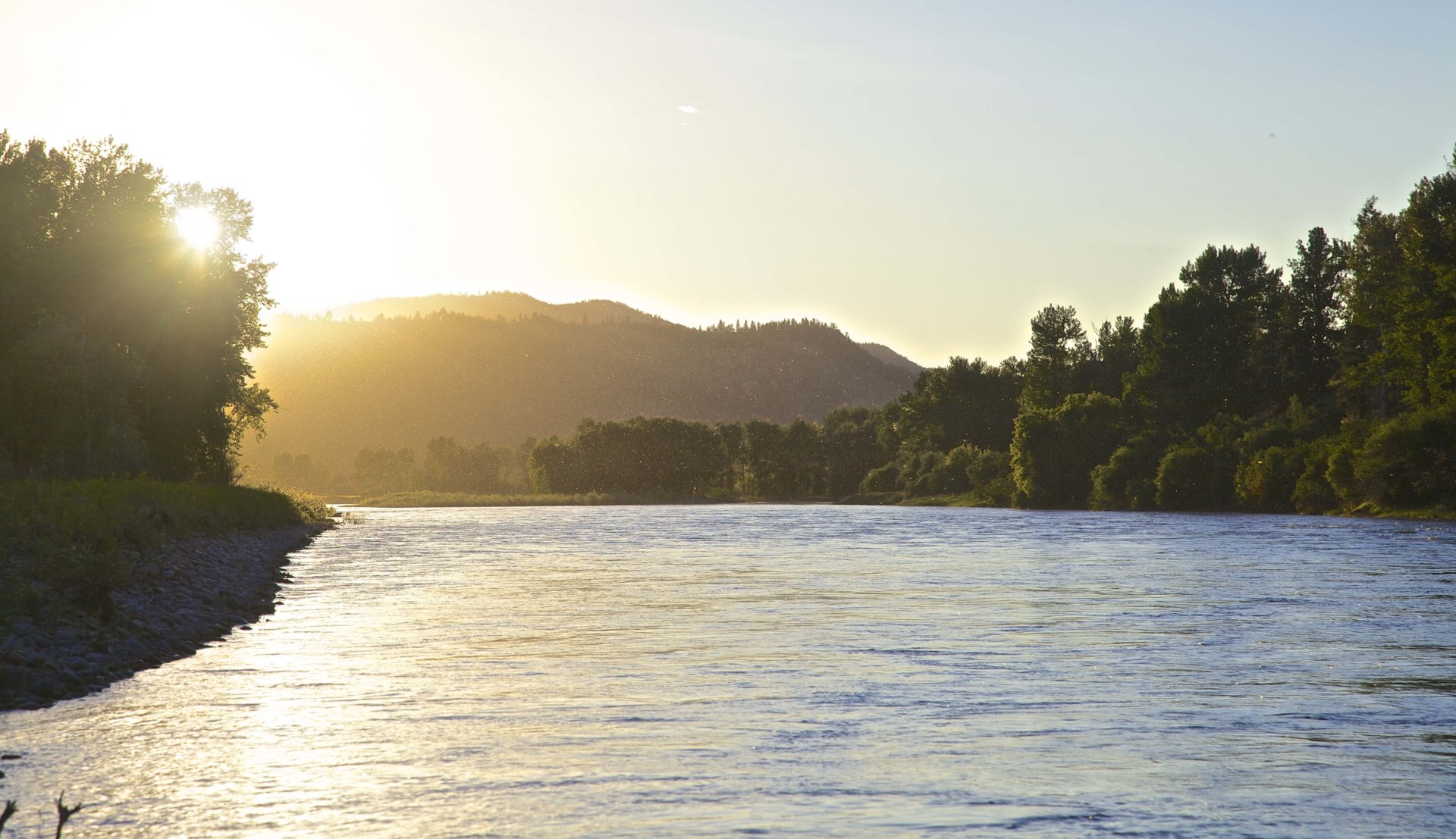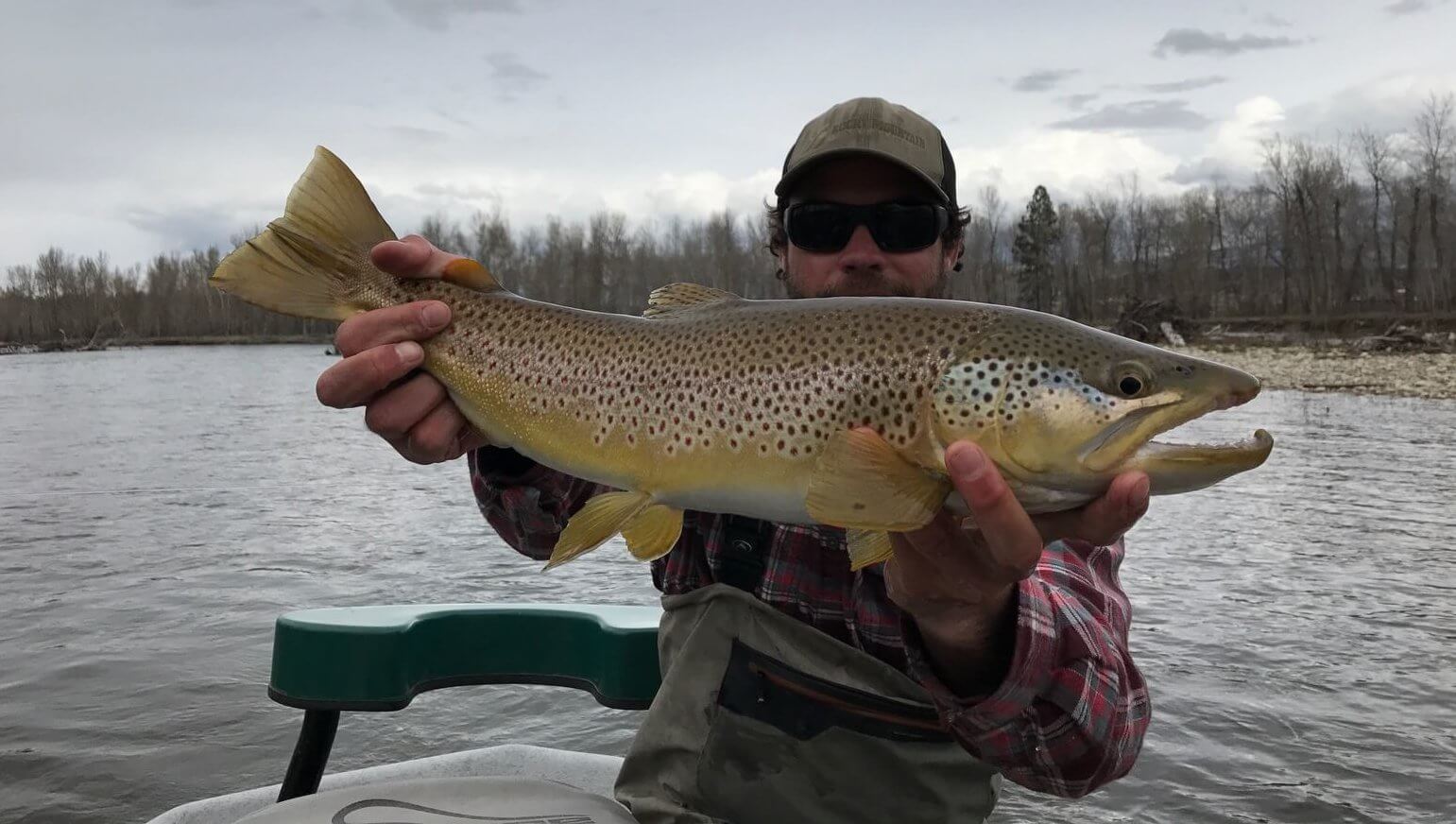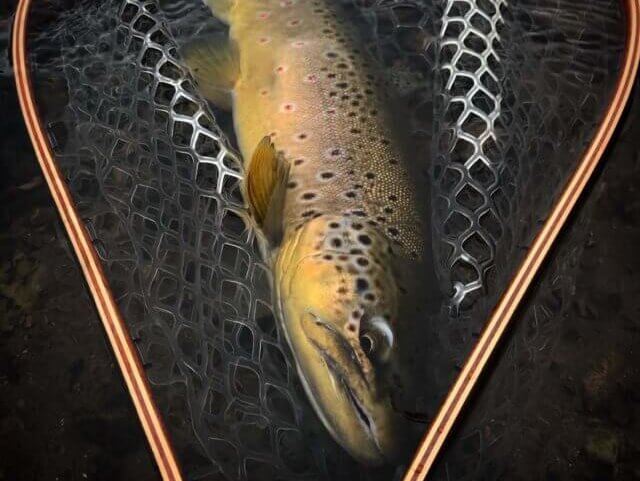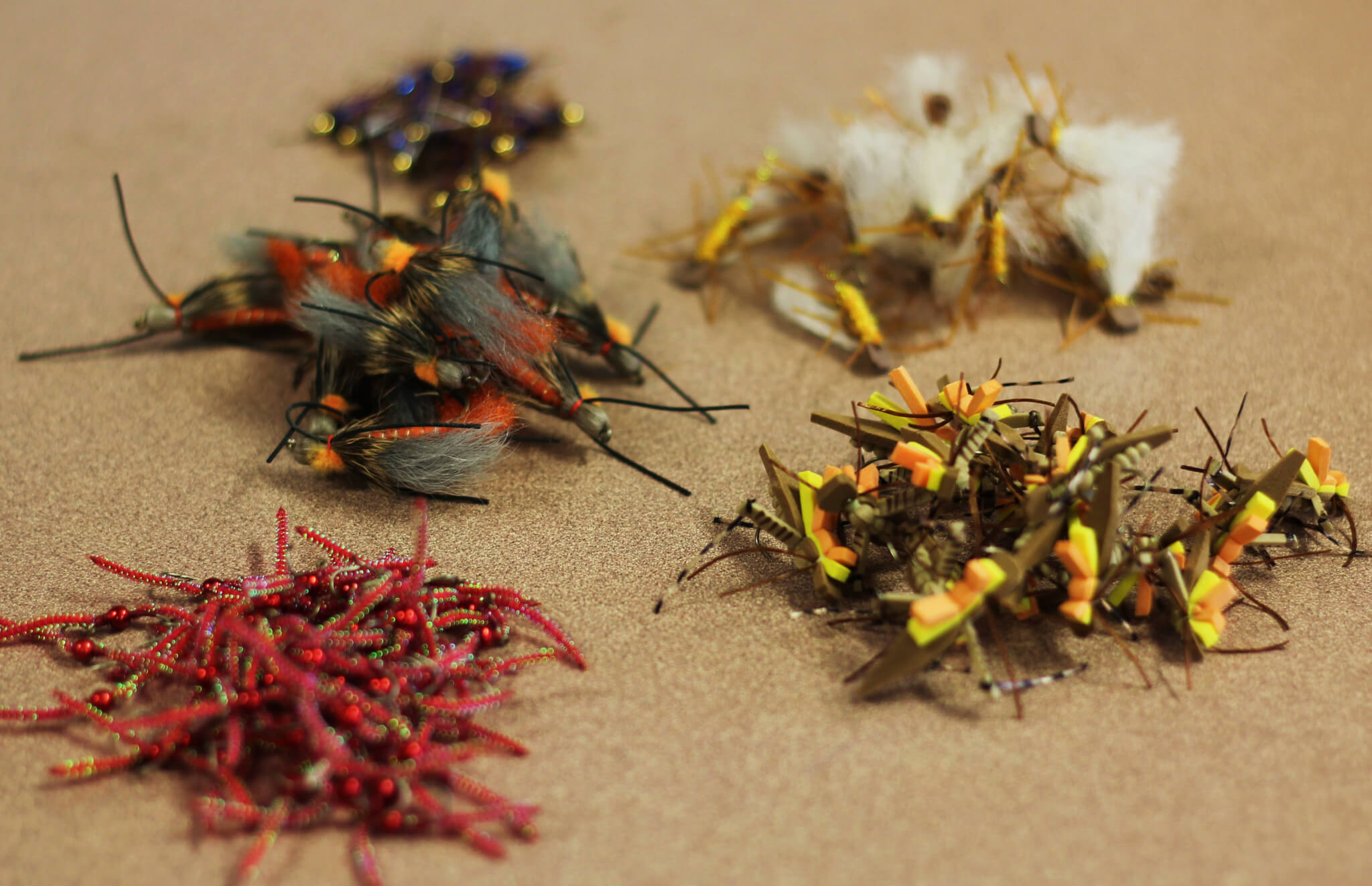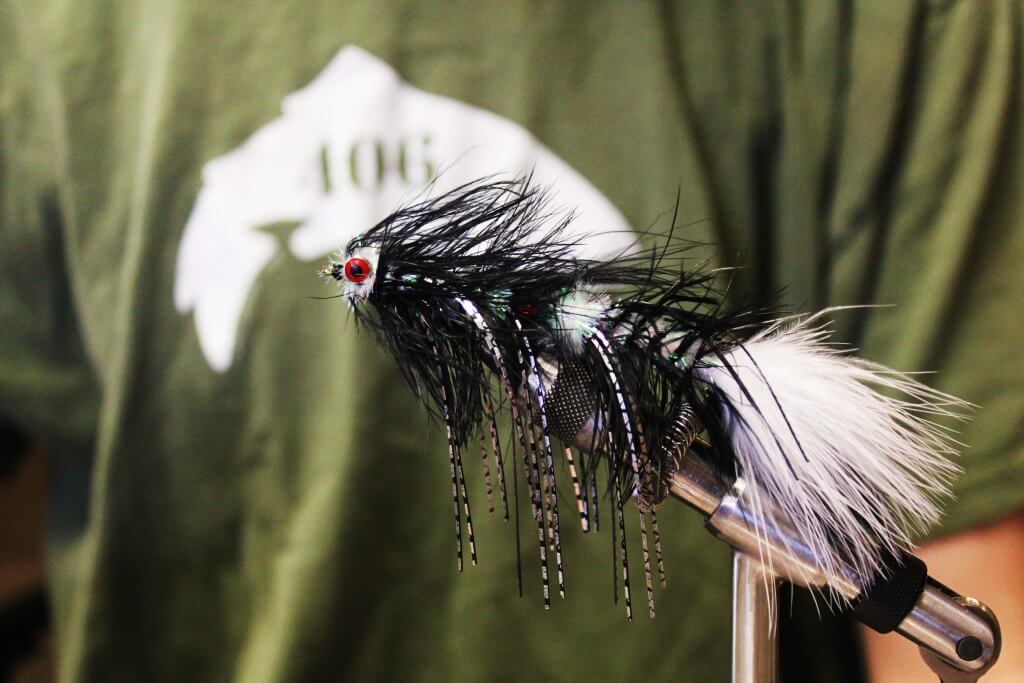Slabside. Pig. Brother Two Foot. Doesn’t matter the slang you use, lifetime fly fishing memories are made as you venture on the water, sights set on the size of the result. But how do you find them? What’s the secret for locating that fish of a lifetime? Here’s a couple of hints to get you off the dinks and into the Dawgs!
The first step is to do a little homework, and go where big fish live. For some, it may be higher altitude lakes or a tailwater river. We try not to rub it in, but Montana has a surplus of big trout, and we know how lucky we are. If your home river is a stocked stream that hits 80 degrees in August, then its not going to hold too many large trout. A big fish in that river may be 11 inches! A trophy if you know about the water, but maybe not the photo op you’re looking for. Once you decide to land a big trout, you need to go where you actually have the chance to catch one, whether you’re driving or flying. It might take a bit of planning.
Big trout are a direct application of trout biology. This is the reason you paid attention in seventh grade. While it should go without saying, big fish get big because they have a continuous, abundant food source. They survive because they have protection from predators, and grow because they have a place to live where they don’t need to expend a lot of energy, which uses up those precious calories. These are the three things trout need to attain size. You need to find big fish holding lies, and there are no road maps. Add to the equation that big trout are natural survivors, or they wouldn’t have gotten so big, and you have a pretty good puzzle to solve.
The first thing to do when deciding to target big trout is put away the dry fly. Sure, there are specialized times when big trout will come to the surface, but it’s not something to bank on. Big fish need more calories to sustain themselves and staying near the surface requires more energy, where most often the rewards don’t cover the energy expenditure. Add in large trout are survivors, avoiding exposure to predators, and the smart money goes under water.
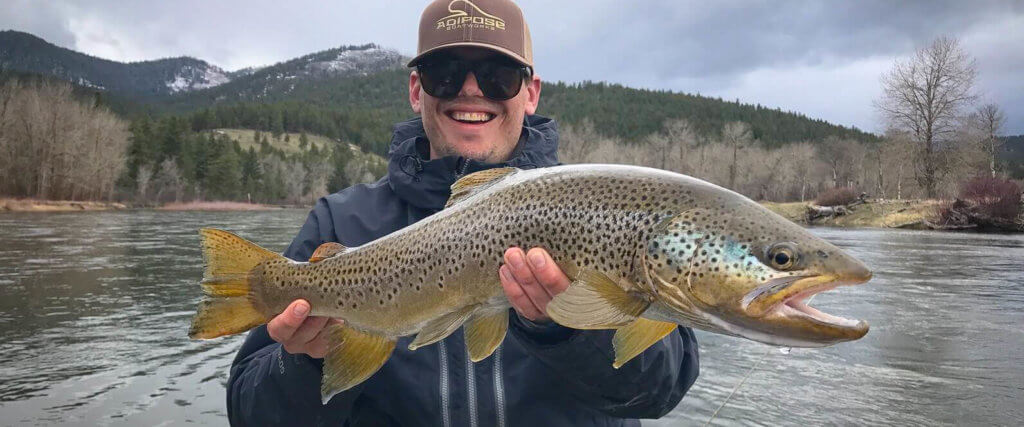
One of the best pieces of advice ever is Albert Einstein’s definition of insanity- doing the same thing over and over and expecting a different result! In order to start changing your result, you need to start changing your habits. If you always go to the same hole on Rock Creek in Montana, and always catch little fish, something has to change. And don’t count on an earthquake changing the nature of that hole! Take it a step further. If you always nymph with your indicator set at 3’, you might want to add some length. Change your depth. Put on a smaller fly than normally used, or a larger one. If you never use weight, maybe you should try some. Change your game, change your strategy. If it doesn’t work, so what! You’ve learned something, and while you didn’t go big, you weren’t going big before, so nothing ventured, nothing gained.
This might sound a bit contradictory to what was just said, but you still need to be familiar with the water you’re fishing before starting to take big fish. Very few anglers step into a new piece of water and start taking lunkers. You need to have some familiarity with where you’re fishing before the big fish will start to show themselves. And they do show themselves. Sometimes you find them by clumsy or inattentive wading. Who hasn’t walked to the edge of a river and spooked a huge fish from the bank. Remember that! Remember where you spooked that big fish! They’re coming back to that spot, because they were there for a reason. Make a note, and choose a different path next time.
Floating anglers have this built in, but for the wading angler, the best tool they have for finding big fish are their boots! You are NOT a tree- move your feet. Big trout don’t come find you, you go find them. The more territory you cover, the better your chances are of finding a bigger fish. This can prove to be problematic for the wading angler on larger rivers. Often the topography simply doesn’t allow for a wide range of movement. Which is too bad, as larger rivers hold a disproportionate number of big trout.
That’s another aspect of big trout hunting. The bigger the watershed, the bigger the trout. In Missoula, the Clark Fork River holds the largest Brown Trout and Rainbow trout in our area, simply because it’s a our biggest river. Everything is oversized, the currents, the lies, the food supply. You name it, it’s bigger. By comparison, though Rock Creek has the most trout per mile of any Missoula River, the average fish size is less than that of our other local rivers. When you’re on the prowl for Mr. Big, the journey often begins at a larger river, but this isn’t always the case.
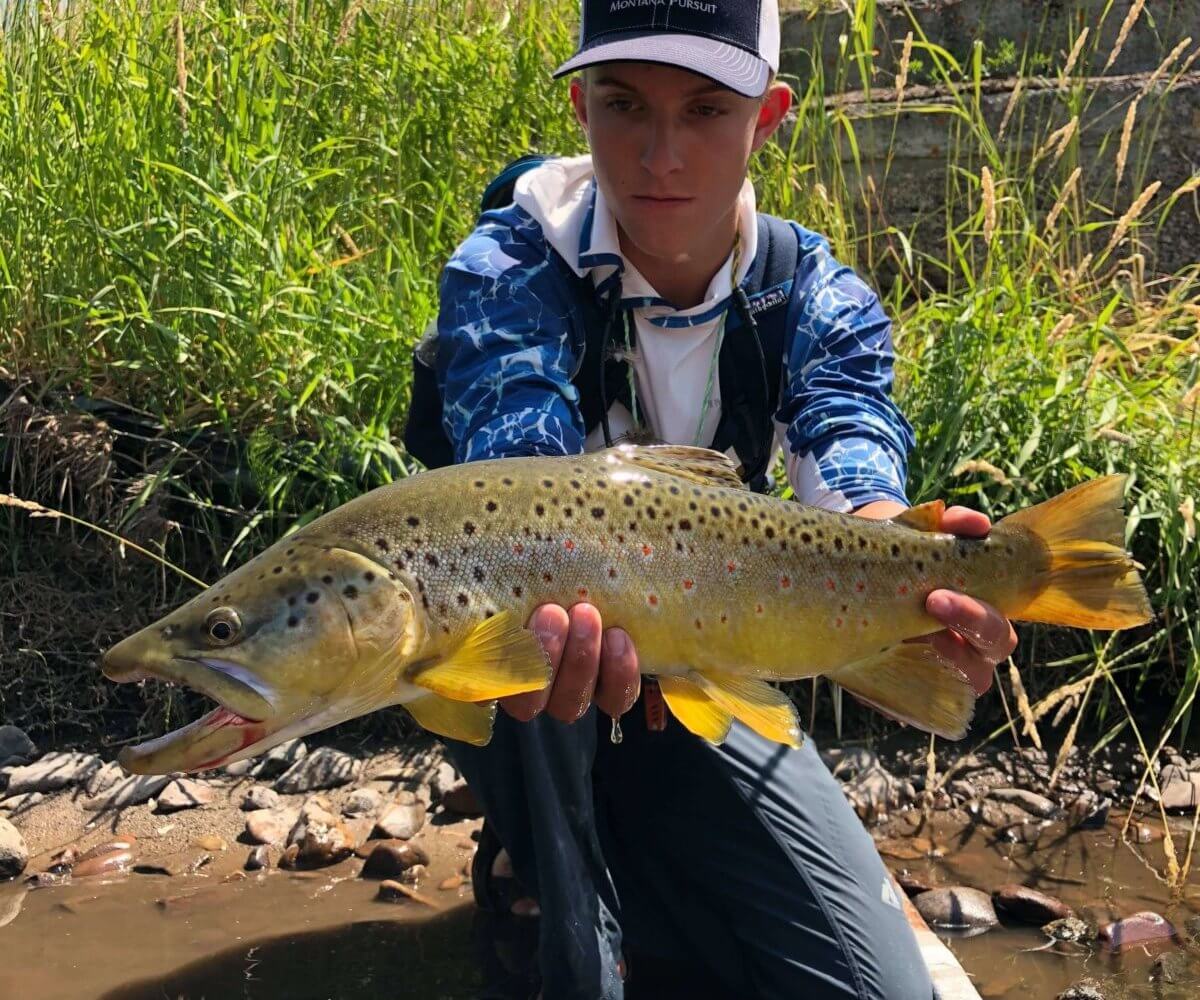
As you cover more ground, be alert for any motion in the water. Your movement along the river creates sensations that big trout don’t enjoy, and the first time you spot a larger fish may be as it slides back under the bank or sideways to a downed log. Again, remember that spot! If a big trout is there now, it’s there later. Pay attention as you walk the river. Remember, you’re not on salary! Slow and watchful beats fast and careless 99 times out of 100. Walk like you’re being paid by the hour. Of course, if you’re walking through ankle deep water, you can move at pace, but the moment any decent water presents itself, slow down, put your head on a swivel, and start looking for places of food, shelter and low current speed.
Sid Gordon wrote a book called How To Fish From Top To Bottom. He was paid to go to lakes and ascertain if there were any fish in them, and if so, what were they. When coming to new water, he used a white pie plate on a harness that he lowered into the water. If he had 6 feet of visibility, he would cast his lure out and retrieve. If he had no strikes, he would make his next cast 12 feet from the last. His theory, and its a good one, is that if a fish is out and eating, they can see your lure. Whether the fish eats or not can’t be changed, but why go over old ground. A 12’ casting radius with 6’ of visibility covers the most water efficiently. A good lesson when looking for any fish, but especially big ones.
Let’s go one step farther. Big fish are wary, and the act of draping your fly line across the water is disturbing. Focus on what you’re doing, and make the first cast your best cast. Results diminish with every cast, so make the first one count. Unless you’re euronymphing, and making a very light disturbance on the water, each successive cast is more intrusive and less likely to take fish.
Earlier, we said look for fish sliding out of their feeding lanes and back under cover. Big trout are exceptionally structure oriented. If they’re not feeding, they’re under cover. When you go in search of big trout, have a lot of flies with you, because you’re going to lose some. Our Bitterroot River is known for trees in the water, grounded, stump end facing upstream. The root wad breaks the rivers flow, carving out deep side channels on each side. Those root wads scream big fish. Not surprisingly, they’re also full of roots! Which will snag your fly and keep it. It’s a risk/reward situation. Are you willing to put your bug where it needs to be, knowing you probably won’t get it back? That is a question every big fish fisherman asks before they cast. Is it worth it? Before you set out to chase Big Papa, you need to know the answer to that question.
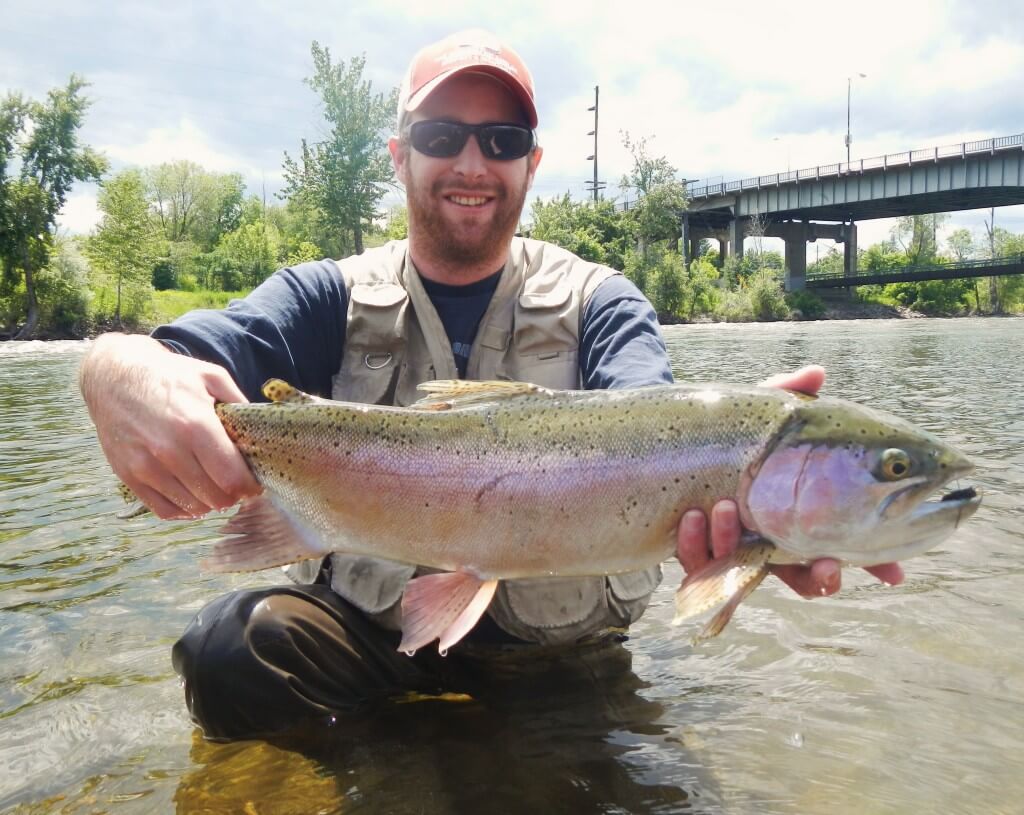
Contrary to what was previously said, there are people who come to new water and catch big fish. They’re your everyday, average streamer junkie. You know that angler! Runs a 7 or 8 wt., doesn’t have a floating line, and the flies they throw are close to the size of a trout taking mayflies. They catch big fish. Because that’s all they’re going to catch. Biologists (back to 7th grade!) will tell you that a trout strikes only if they are at least 3 times the prey’s size. When you’re throwing a 6” streamer, unless you find a kamikaze trout, the smallest fish you’ll take is 18”! Specialized equipment for a specialized task. They keep score in a different way. A brutal yellow flash that turns aside at the last instant counts! You moved a fish as wide as most fish are long. It’s a different game when you’re hunting big fish, and a flash is almost as good as a strike! Keep this in mind, those big fish chasers remember that spot for the next time!
Big fish require different tactics, and a different level of commitment. You’re going to leave your comfort zone, and venture into a new area. It can be frustrating. Success is not going to come walking down the river to shake your hand. There will be days when fish count is lower than flies lost. Chasing big fish is a mindset. For many anglers, it’s not important. But as with all aspects of fly fishing, when you decide to learn something new, the spillover will up your game in every aspect. Learning to examine the water closely will pay dividends no matter what size fish you catch. Expanding your boundaries will quickly improve your casting. This may sound funny, but losing flies makes your knot tying faster and stronger. So as you bumble about on the water the first few times you target that Hooknose, know that whether you’re successful in the short run or not, expanding your fish size will expand your skill set, and that’s never a bad thing!
